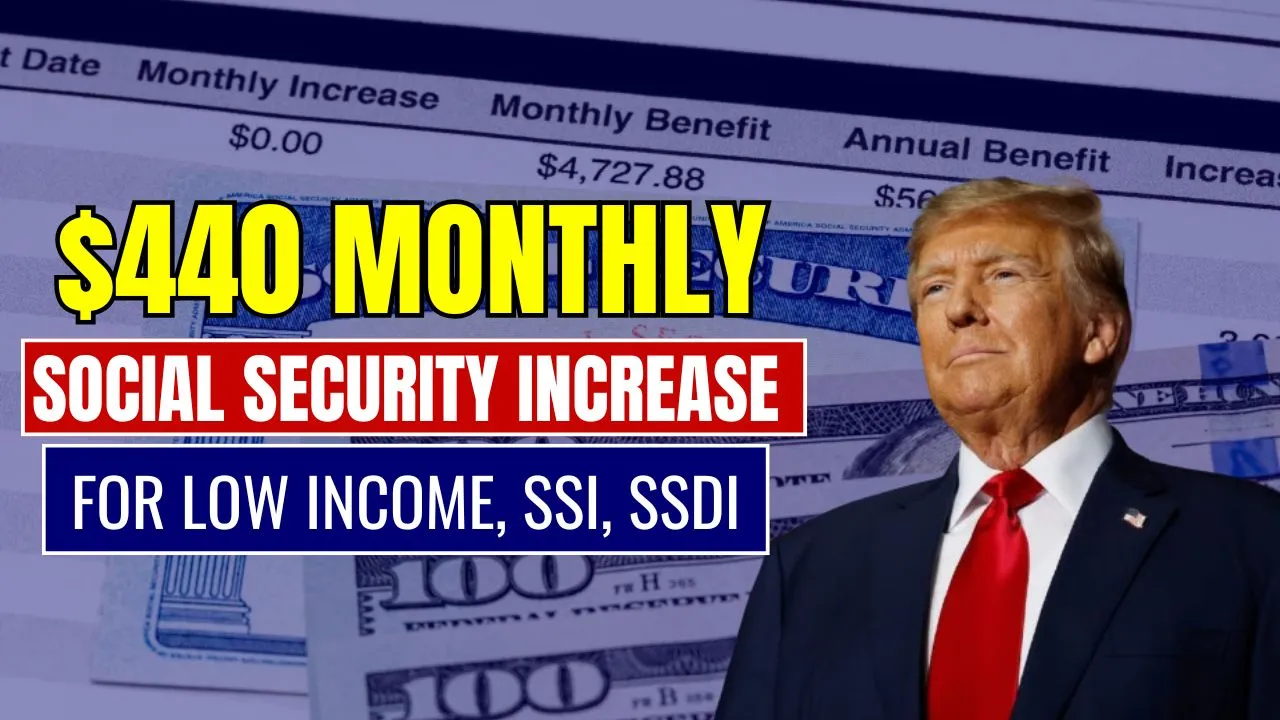Social Security Tax Increase 2025: In 2025, the Social Security program will undergo a significant update that impacts higher earners. The taxable wage base, which sets the maximum income subject to Social Security taxes, will rise from $168,600 to $176,100. This adjustment means that individuals earning above the previous cap will see an additional $7,500 of income subject to taxation. The increase will result in higher contributions to the program, ensuring its long-term sustainability while providing funding for retirees and others who depend on Social Security benefits.
The Social Security Tax Increase 2025 comes as part of regular adjustments to the system to account for inflation and economic changes. Employees earning above the new cap will pay an additional $465 in taxes, while self-employed individuals, who are responsible for both employee and employer portions, will contribute an extra $930. Below is a detailed overview of the key changes and their implications for workers, self-employed individuals, and the program itself.
Key Information at a Glance
| Criteria | Details |
| Wage Base (2024) | $168,600 |
| Wage Base (2025) | $176,100 |
| Increase in Taxable Income | $7,500 |
| Tax Rate | 12.4% (6.2% each for employees and employers) |
| Additional Tax for Employees | $465 |
| Additional Tax for Self-Employed | $930 |
| Cost-of-Living Adjustment (COLA) | 2.5% increase for 2025 |
What Is the Social Security Tax Increase in 2025?
The Social Security Tax Increase 2025 refers to the annual adjustment to the wage base, which determines the maximum amount of income subject to Social Security taxes. For 2025, this wage base rises to $176,100 from $168,600 in 2024, adding $7,500 to the taxable income of high earners.
This increase ensures that Social Security remains adequately funded as the program continues to provide retirement benefits, disability payments, and other forms of assistance to millions of Americans. The tax rate remains unchanged at 12.4%, split evenly between employees and employers. For self-employed individuals, the entire 12.4% is paid, reflecting the combined contributions of both roles.
How the Wage Base Increase Affects Contributions
Employees
For employees, the Social Security tax increase will mean an additional $465 in contributions for those earning above $176,100. This amount represents the 6.2% tax on the $7,500 increase in taxable income. Employers will match this contribution, doubling the total amount directed to the Social Security system.
Self-Employed Individuals
Self-employed individuals will experience a more significant impact, as they are responsible for the full 12.4% tax rate. This results in an additional $930 in Social Security taxes for earnings up to the new wage base. Proper financial planning is crucial for these individuals to account for the increased tax burden.
Impact on Lower Earners
For individuals earning less than the wage base, the increase has no effect. Their Social Security tax contributions remain the same as in 2024. However, they will benefit from program adjustments, such as the Cost-of-Living Adjustment (COLA).
Social Security Tax Rate and Its Purpose
The Social Security tax rate has been set at 12.4% for several decades, with no changes for 2025. This rate is split evenly between employees and employers, while self-employed individuals pay the full amount. The contributions support the program’s funding, ensuring benefits for retirees, disabled individuals, and surviving family members.
The wage base increase is essential for sustaining the program as it faces rising costs due to inflation and an aging population. By taxing a larger portion of high earners’ income, Social Security can maintain its financial stability and continue to provide critical benefits.
Cost-of-Living Adjustment (COLA) for 2025
To keep up with inflation, Social Security benefits are adjusted annually through the Cost-of-Living Adjustment (COLA). For 2025, the COLA is set at 2.5%, resulting in an average increase of $50 per month for beneficiaries.
Key Impacts of the COLA:
- Increased Benefits: Recipients will see higher monthly payments starting January 2025.
- SSI Adjustments: Supplemental Security Income (SSI) beneficiaries will also receive higher payments, with changes reflected in their December 31, 2024, payments.
- Inflation Protection: The COLA helps retirees and others maintain their purchasing power amid rising costs.
Preparing for the Social Security Tax Increase
With the wage base adjustment, higher earners should take steps to prepare for the increased tax contributions:
1. Understand Your Tax Liability
Calculate how the additional $7,500 in taxable income will impact your total tax contribution. For employees, this means an extra $465, while self-employed individuals will need to budget for an additional $930.
2. Adjust Your Budget
Incorporate the increased tax contributions into your financial planning. This is particularly important for self-employed individuals who must account for the full 12.4% rate.
3. Review Retirement Plans
Higher contributions to Social Security taxes can have long-term implications for retirement benefits. Review your plans and consider how these changes might impact your overall financial strategy.
4. Seek Professional Advice
Consult a financial advisor or tax professional to better understand the implications of the wage base increase on your finances. They can help identify strategies to minimize the impact and optimize your contributions.
Frequently Asked Questions (FAQs)
What is the new Social Security wage base for 2025?
The wage base for 2025 is $176,100, up from $168,600 in 2024.
How does the Social Security tax rate apply?
The tax rate remains 12.4%, with employees and employers each paying 6.2%. Self-employed individuals pay the full rate.
Who is affected by the wage base increase?
The increase primarily impacts high earners with income above $168,600, who will pay taxes on an additional $7,500 in 2025.
How much more will self-employed individuals pay?
Self-employed individuals will contribute an additional $930 in Social Security taxes due to the wage base increase.
What is the COLA adjustment for 2025?
The 2.5% COLA for 2025 will increase Social Security benefits by an average of $50 per month, starting in January.
Final Thoughts
The Social Security Tax Increase 2025 brings important changes for higher earners. By raising the wage base to $176,100, the program ensures adequate funding to support current and future beneficiaries. While the tax rate remains the same, employees and self-employed individuals will see higher contributions to accommodate the additional $7,500 in taxable income.
Understanding these changes is essential for effective financial planning. Whether you’re an employee, self-employed, or a retiree, staying informed about Social Security updates can help you manage your contributions and benefits more effectively. For those impacted by the wage base increase, proactive budgeting and professional advice can minimize the financial burden while preparing for a secure retirement.
Read Also













